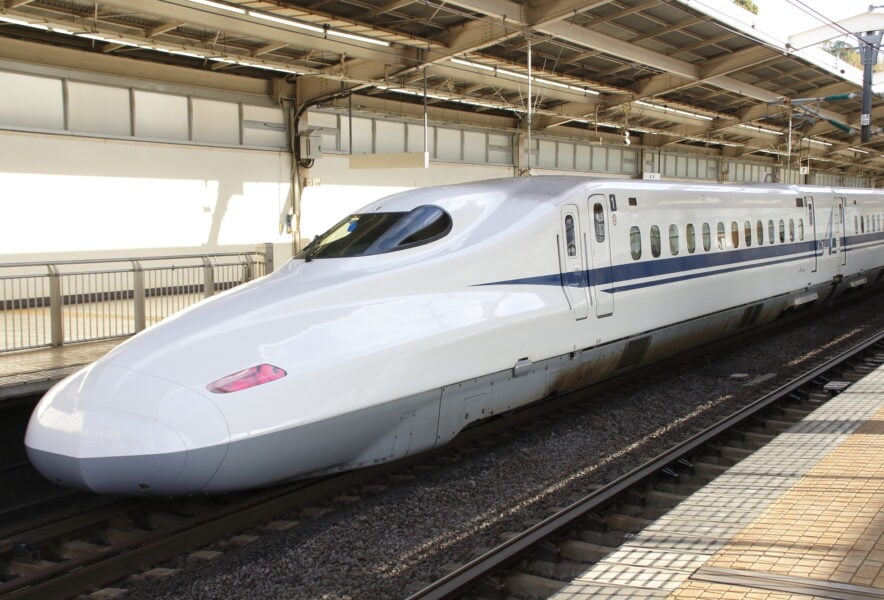Do you know how many types of Shinkansen there are in Japan?
There are many confusing terms in regards to Shinkansen, such as Nozomi, Hikari, and Kodama, as well as terms like the 700 Series and the E5 Series.
In this article, we will explain the types of Shinkansen in an easy-to-understand manner for those who are unfamiliar.
After understanding this article, you should be able to fully grasp the differences between Nozomi, Hikari, and Kodama trains.
The Shinkansen has 10 lines
There are 10 Shinkansen lines running throughout Japan, including two lines known as mini-Shinkansen. 10 lines are as follows.
- Tokaido Shinkansen: N700 Series
- Sanyo Shinkansen: N700 Series
- Hokkaido Shinkansen: Series E5 and H5
- Tohoku Shinkansen: Series E3, E5, E6, H5
- Yamagata Shinkansen: E3 and E8 Series
- Akita Shinkansen: E6 Series
- Joetsu Shinkansen: E2 Series (some cars)
- Hokuriku Shinkansen: Series E7 and W7
- Kyushu Shinkansen: N700 Series
- West Kyushu Shinkansen: N700 Series
*Mini Shinkansen is Yamagata Shinkansen and Akita Shinkansen.
In addition to the above, special vehicles such as the Shinkansen vehicle test car and Tokai Doctor Yellow also run on these lines.
By the way, the Doctor Yellow is an inspection-only vehicle based on the Series 700, in a special yellow body.
Popularly known as the "Shinkansen Doctor" or the "Happy Yellow Shinkansen," it is scheduled for retirement in January 2025.
These special yellow trains operate on a private schedule, so only a lucky few come across Doctor Yellow. You will be very lucky if you see one before retirement.
What is Tokaido Shinkansen?
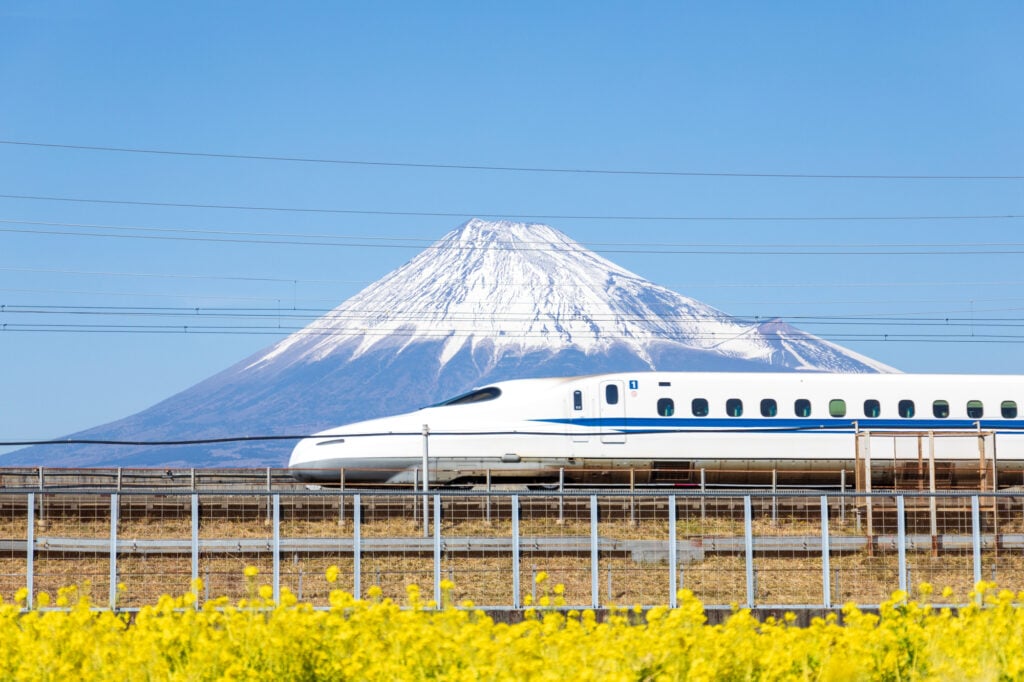
The Tokaido Shinkansen is the hub of Japan's Shinkansen network and the main artery connecting Tokyo and Shin-Osaka.
Since its opening in 1964, it has powerfully driven Japan's economic development and is one of the world's leading high-speed railroads, with more than 150 million passengers using it annually.
Nozomi, Hikari, and Kodama trains will travel at speeds of up to 300 km/h, connecting Tokyo and Shin-Osaka in as fast as 2 hours and 22 minutes.
The appeal of the Tokaido Shinkansen is its speed, comfort, and beautiful scenery from the train windows.
On a clear day, visitors can enjoy iconic Japanese landscapes such as Mount Fuji and Lake Hamana.
Ekiben (駅弁; a special kind of bento sold around train stations that is usually consumed while riding long train rides), such as the Tokaido Shinkansen bento and Shiumai bento from Kiyoken, as well as a wide variety of in-train sales add to the enjoyment of the trip.
The Shinkansen is used by many people for business, tourism, and a variety of other purposes, and continues to contribute to the development of Japan.
What is Sanyo Shinkansen?
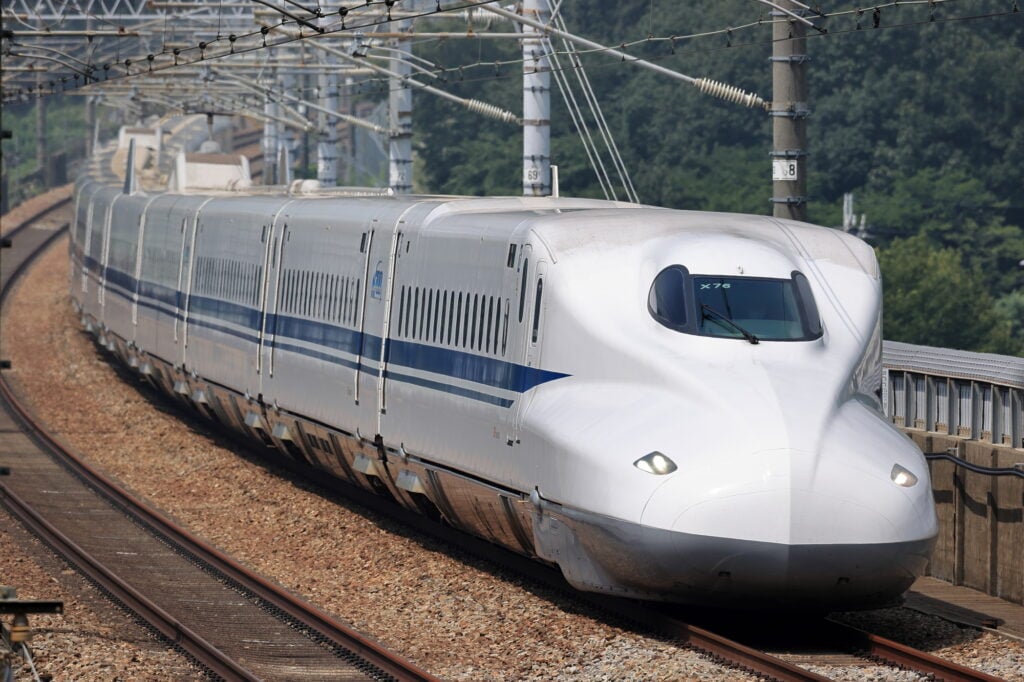
The Sanyo Shinkansen is an extension of the Tokaido Shinkansen line, connecting Shin-Osaka to Hakata.
Since its full operation in 1975, the line has connected major cities in western Japan, contributing greatly to the development of the regional economy.
The Nozomi, Mizuho, Sakura, Hikari/Hikari Rail Star, and Kodama trains will operate between Shin-Osaka and Hakata in approximately 2 hours and 30 minutes, with Kodama trains operating at a maximum speed of approximately 300 km/h.
The Sanyo Shinkansen offers direct service with the Tokaido Shinkansen, allowing passengers to travel from Tokyo to Kyushu without changing trains.
This is also why it is commonly referred to as the Tokaido/Sanyo Shinkansen.
From the windows of the Sanyo Shinkansen train, you can enjoy beautiful views of the Seto Inland Sea and historical architectures such as the Akashi and Okayama Castles.
The area is also dotted with World Heritage-listed tourist attractions such as Himeji Castle and Miyajima Island, so there will be many opportunities for travelers to use this service.
What is the Hokkaido Shinkansen?
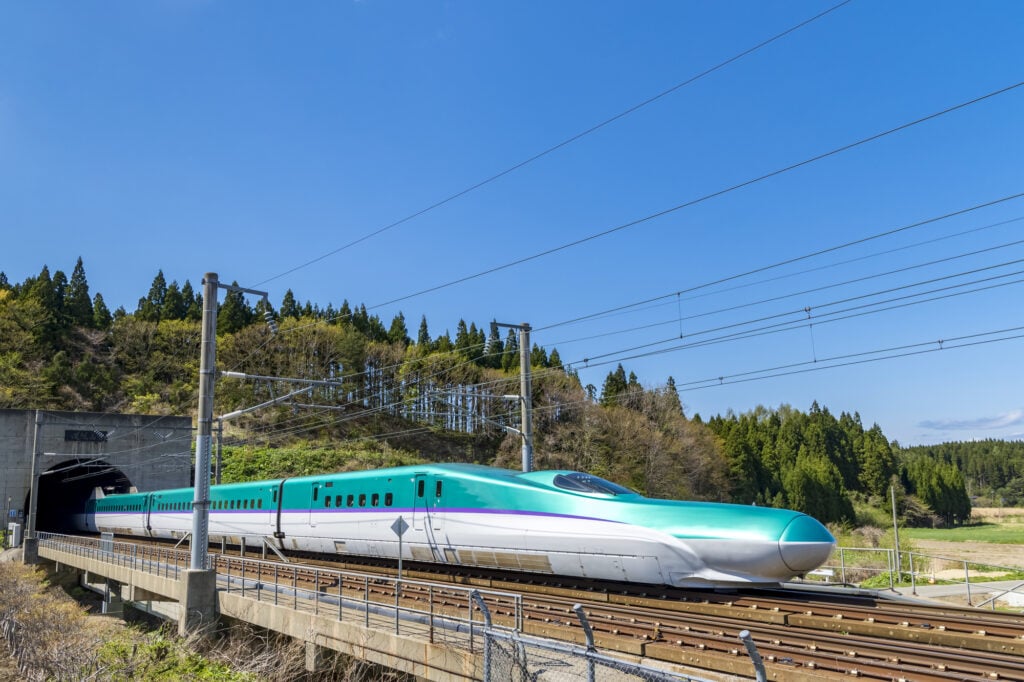
The Hokkaido Shinkansen, which opened in 2016, is a bullet train connecting Honshu and Hokkaido.
It connects Shin-Aomori and Shin-Hakodate-Hokuto through the Seikan Tunnel that runs under the seabed, and the line will be extended to Sapporo in the future (around the end of 2030).
Currently, two types of trains, Hayabusa and Hayate, are in operation, with a maximum speed of 260 km/h.
The attraction of the Hokkaido Shinkansen is the experience of going through the Seikan Tunnel.
The experience of passing through the world's longest undersea tunnel by bullet train can only be experienced here.
From the train windows, passengers can enjoy the natural beauty of Hokkaido, including Mount Hakodate.
After the extension, access to Sapporo, Otaru, and other major tourist destinations in Hokkaido is expected to become even more convenient.
What is Tohoku Shinkansen?
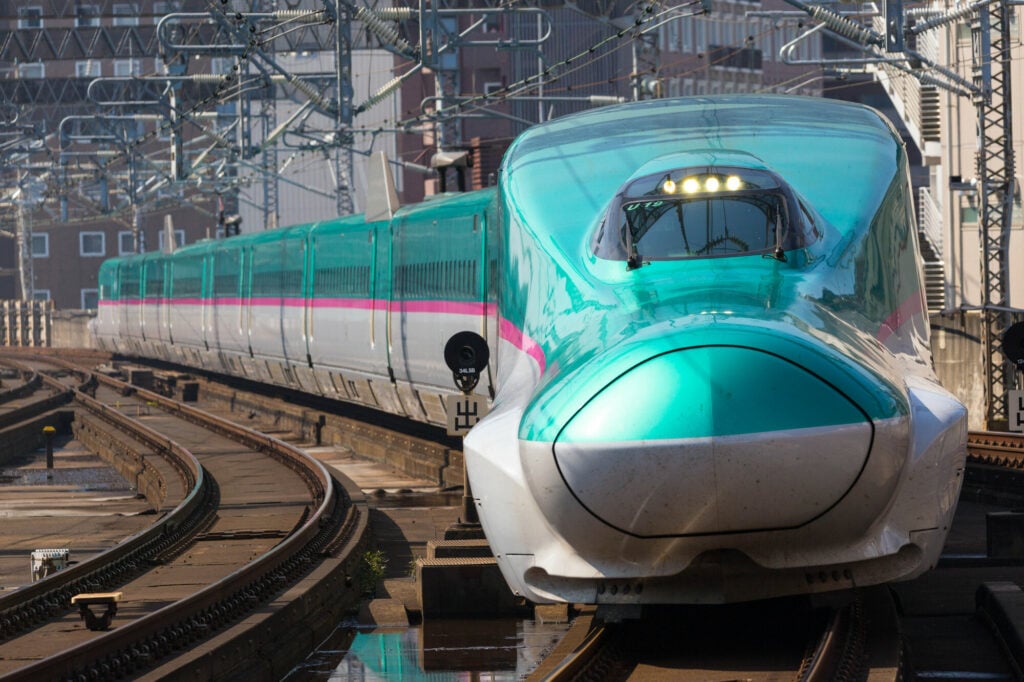
The Tohoku Shinkansen is a bullet train that runs across eastern Japan, connecting Tokyo and Shin-Aomori.
Four main trains, the Hayabusa, Hayate, Yamabiko, and Nasuno, will operate at speeds of up to 320 km/h, connecting Tokyo and Shin-Aomori in as fast as 2 hours 58 minutes.
It is said that the most attractive feature of the Tohoku Shinkansen is the view of Mt. Fuji, the Nikko mountain range, the Azuma mountain range, and other mountains that have been named among the top 100 mountains in Japan.
The beautiful scenery of the four seasons can be seen from the train windows, and at each station along the line, passengers can enjoy local delicacies such as gyutan (牛タン: beef tongue) and Morioka reimen (盛岡冷麺: a type of cold-served noodle).
It also offers convenient access to major cities such as Sendai and Morioka, and is widely used for business and tourism.
What is Yamagata Shinkansen?
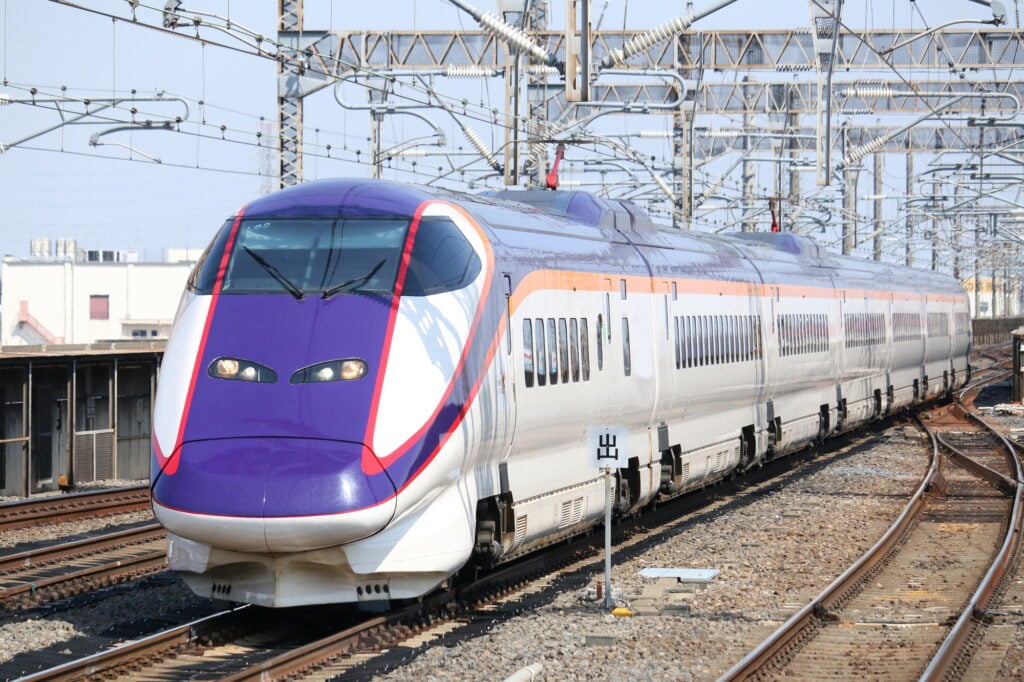
Yamagata Shinkansen is a mini-shinkansen connecting Fukushima to Yamagata/Shinjo.
It connects directly with the Tohoku Shinkansen between Tokyo and Fukushima, connecting Tokyo and Yamagata in about 2 hours and 20 minutes.
Only Tsubasa trains are in operation, with a maximum speed of 130 km/h between Fukushima and Shinjo, and 300 km/h on the Shinkansen section.
The appeal of the Yamagata Shinkansen is that passengers can enjoy a relaxing trip while viewing the beautiful countryside of Tohoku and magnificent mountains such as the Zao mountain range.
Along the line are scattered historic hot spring resorts such as Ginzan Onsen and Zao Onsen, which are also recommended for trips to relax both body and soul.
Visitors can taste local specialties such as Yamagata beef and cherries.
What is Akita Shinkansen?
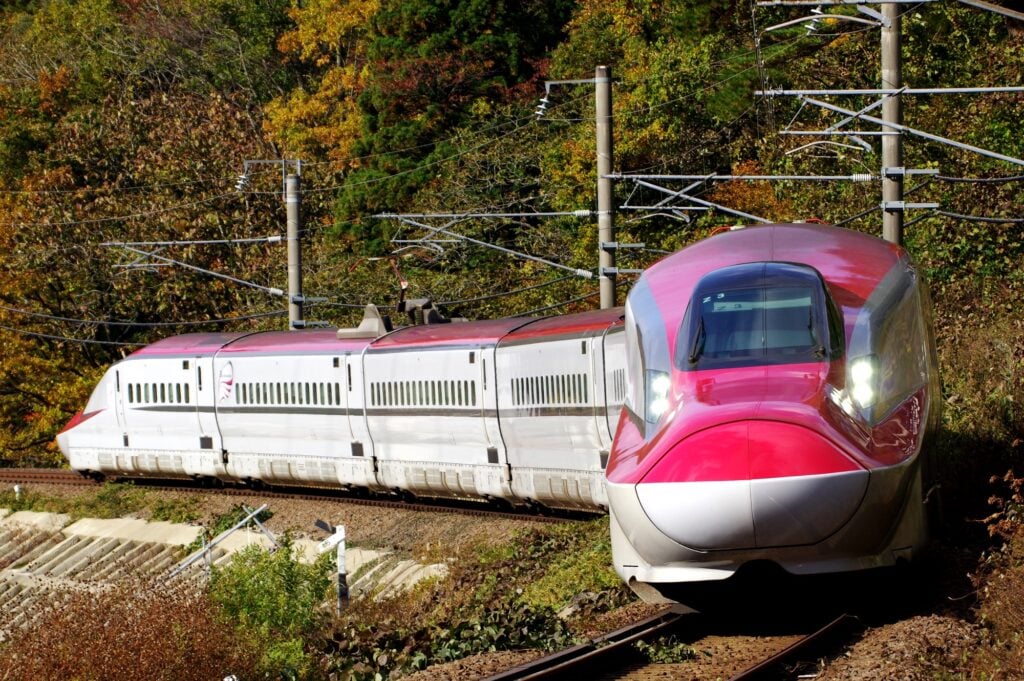
The Akita Shinkansen is a mini Shinkansen running between Morioka and Akita.
It connects directly with the Tohoku Shinkansen Line from Tokyo Station to Morioka Station, connecting Tokyo and Akita in approximately 3 hours and 50 minutes.
The train is Komachi and the maximum speed is 320 km/h on the Shinkansen section and 130 km/h on the conventional line section between Morioka and Akita.
The attraction of the Akita Shinkansen is that it offers a direct connection with the Tohoku Shinkansen, allowing passengers to travel from Tokyo to Akita without changing trains.
Akita Shinkansen's Komachi, including the standard cars, has four seats per row, which are more spacious than the standard five seats per row configuration on other lines.
The seats are golden in color, reminiscent of the ears of rice produced by Akita's famous Akitakomachi rice, and you can enjoy the feeling of Akita from the moment you get on the train.
What is Joetsu Shinkansen?
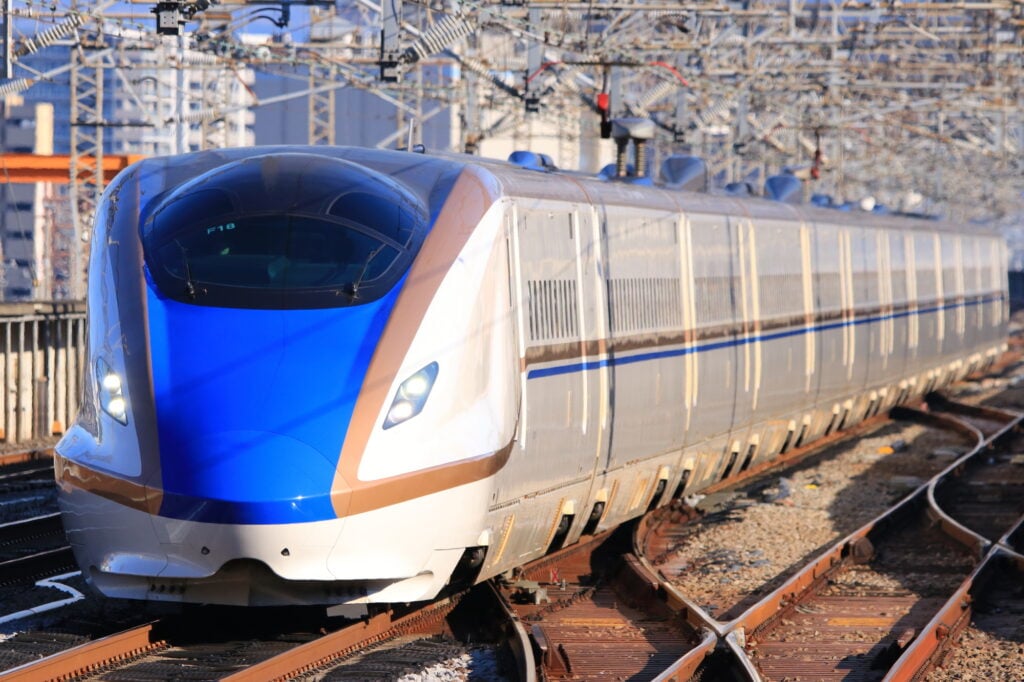
The Joetsu Shinkansen is a bullet train connecting Tokyo and Niigata.
The Toki and Tanigawa trains run at speeds of up to 275 km/h and travel between Tokyo and Niigata in as fast as 1 hour and 30 minutes.
As a side note, despite the name Joetsu, the Joetsu Shinkansen does not pass through Joetsu City (Joetsu City is in the Hokuriku Shinkansen area).
The Joetsu Shinkansen Line provides easy access to Gala-Yuzawa Ski Resort and Joetsu International Ski Resort, which is recommended when enjoying skiing in Japan.
As with the Yamagata Shinkansen, the rich mountain scenery of Tohoku can be enjoyed from the train windows, especially in winter when the snow-capped mountains are beautiful.
What is the Hokuriku Shinkansen?

The Hokuriku Shinkansen is a bullet train connecting Tokyo and Kanazawa.
With the opening of the Nagano - Kanazawa line in 2015, access to the Hokuriku region has greatly improved.
Trains such as the Kagayaki and Hakutaka run at speeds of up to 260 km/h, connecting Tokyo and Kanazawa in as fast as 2 hours and 28 minutes.
The attraction of the Hokuriku Shinkansen is the opportunity to experience Kanazawa's traditional culture and beautiful nature.
Access to popular tourist spots such as Kenrokuen Garden and the 21st Century Museum of Contemporary Art, Kanazawa, has also become more convenient.
There are also many attractive Hokuriku sightseeing spots along the line, such as Kurobe Gorge in Toyama Prefecture and the Dinosaur Museum in Fukui Prefecture.
What is the Kyushu Shinkansen?
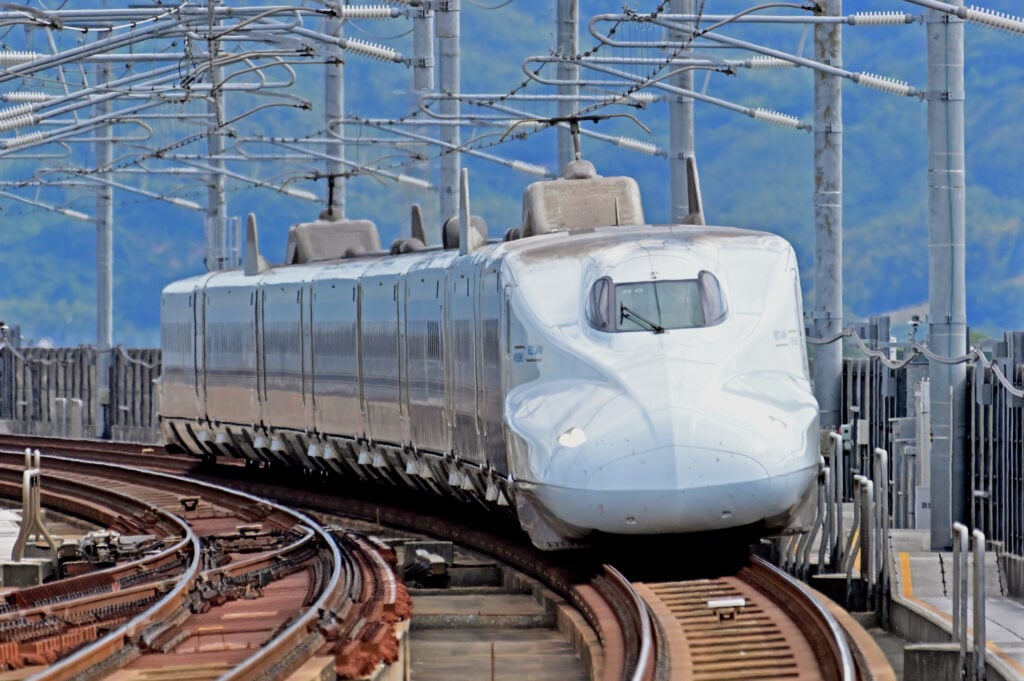
The Kyushu Shinkansen connects Hakata and Kagoshima-Chuo.
Three types of trains, the Mizuho, Sakura, and Tsubame, will operate at speeds of up to 260 km/h, connecting Hakata and Kagoshima-Chuo in as fast as 1 hour and 17 minutes.
The Kyushu Shinkansen also offers direct service with the Sanyo Shinkansen, allowing passengers to go from Shin-Osaka Station to Kagoshima Chuo Station without changing trains.
This makes it convenient to travel from the Kansai area to Kumamoto and Kagoshima.
It is good for sightseeing in Central and Southern Kyushu area such as Kumamoto Castle and Sakurajima.
What is the West Kyushu Shinkansen?
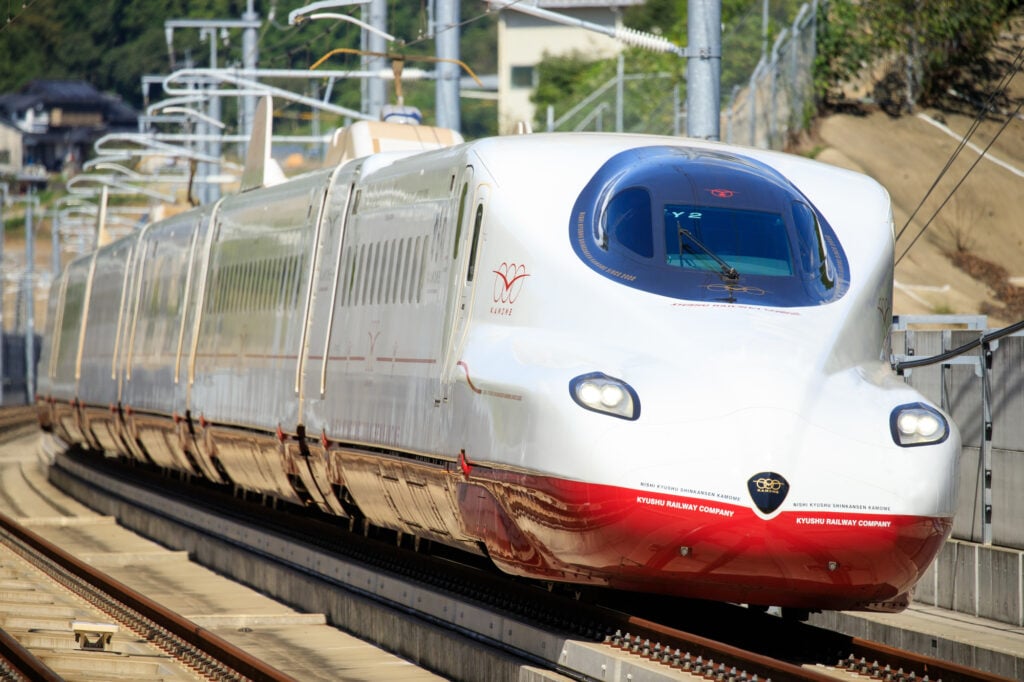
The West Kyushu Shinkansen is a bullet train that will cover the Saga and Nagasaki areas, opening in 2022.
It is served by a conventional limited express train from Hakata Station to Takeo Onsen Station, connecting Takeo Onsen to Nagasaki.
The Kamome, with a maximum speed of 260 km/h, will travel between Hakata and Nagasaki in as little as 1 hour and 20 minutes (23 minutes between Takeo Onsen and Nagasaki).
The West Kyushu Shinkansen allows travel from Hakata to Nagasaki without changing trains.
It is recommended for traveling to Huis Ten Bosch, Glover Garden, Dejima, and other tourist attractions in Nagasaki.
Main types of Shinkansen cars
Shinkansen trains are classified into the following types according to their maximum speed, number of seats, and facilities.
N700 series
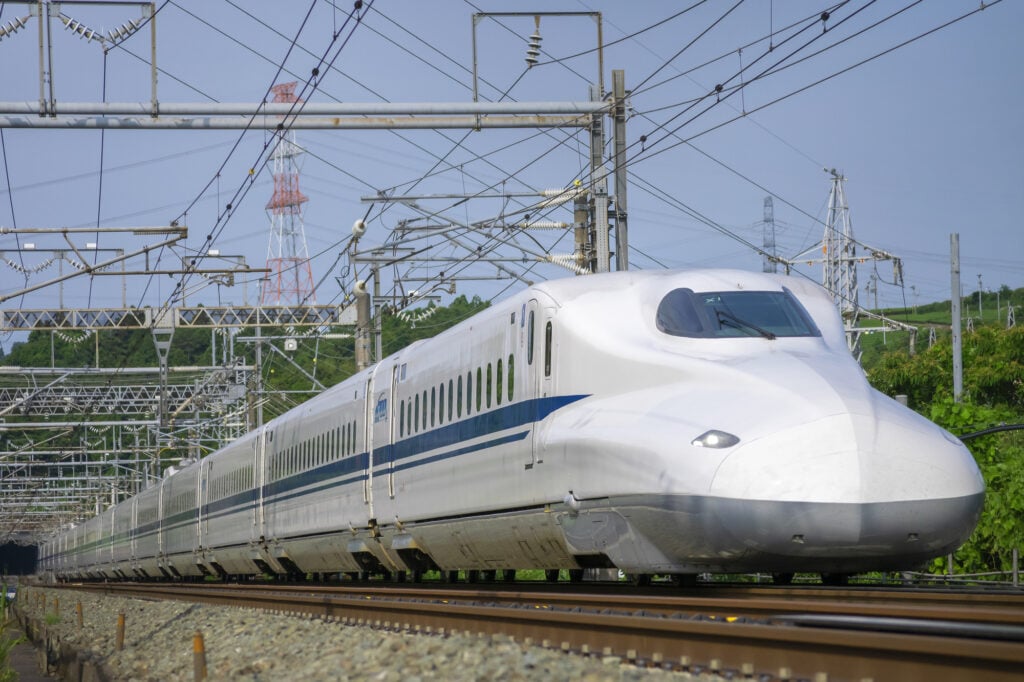
Maximum speed: 285 km/h (300 km/h on Sanyo Shinkansen section only)
Number of seats: 1323 (for 16-car trains)
Facilities: Green Car, Standard Car, Grand Class, Buffet, etc.
Service routes: Tokaido Shinkansen, Sanyo Shinkansen, Kyushu Shinkansen
The N700 is the main rolling stock used on the Tokaido, Sanyo, and Kyushu Shinkansen lines. Its features include both high-speed running and a comfortable ride.
The maximum speed is 285 km/h (300 km/h on the Sanyo Shinkansen section only), connecting Tokyo and Shin-Osaka in as little as 2.5 hours.
The latest N700S variant is also fully equipped with power outlets in every seat.
E5 and H5 series
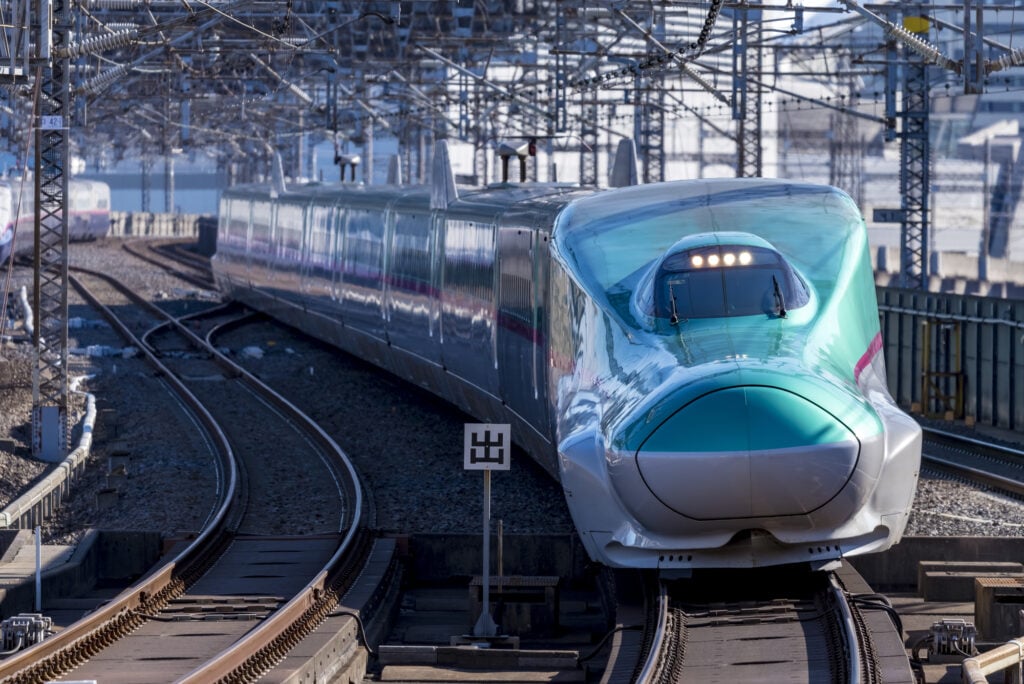
Maximum speed: 320 km/h
Number of seats: 731 (for a 10-car train)
Facilities: Green Car, Normal Car, Grand Class, etc.
Service routes: Tohoku Shinkansen, Hokkaido Shinkansen
This train runs on the Tohoku and Hokkaido Shinkansen lines and is the fastest Shinkansen train in commercial operation at 320 km/h.
Known affectionately as Hayabusa because of its beautiful streamlined form.
The E5 and H5 series trains have the same basic performance and body structure, but the E5 series trains operate on the Tohoku Shinkansen while the H5 series trains operate on the Hokkaido Shinkansen.
Both also offer comfortable standard cars that are comparable to green cars.
E6 series
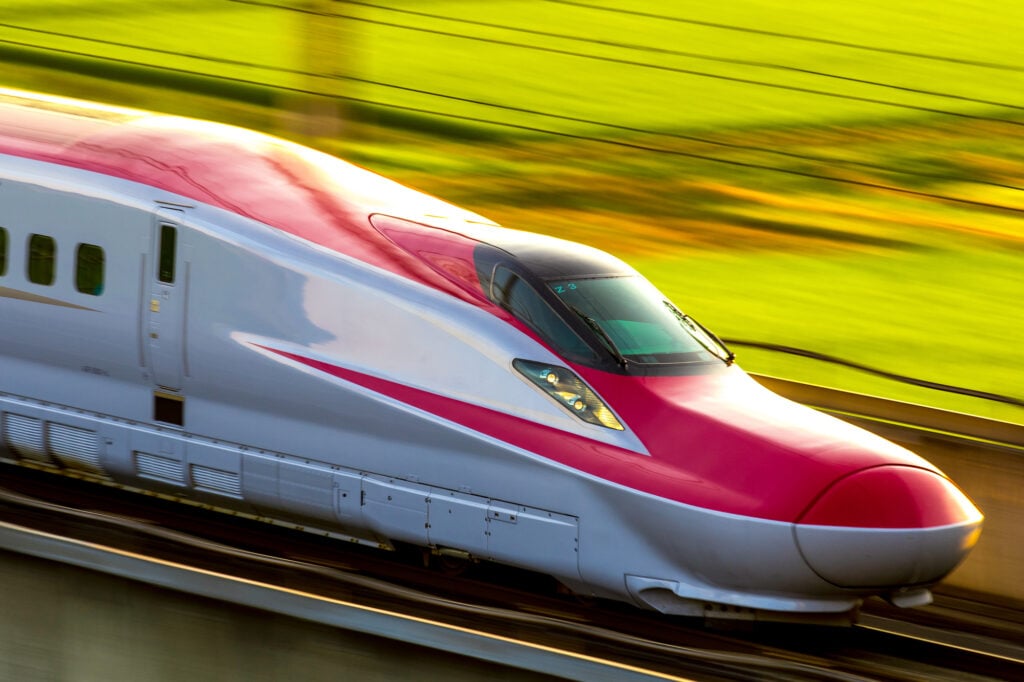
Maximum speed: 320 km/h
Number of seats: 658 seats (for 10-car trains), 402 seats (for 7-car trains)
Facilities: Green Car, Normal Car, Grand Class, etc.
Route: Tohoku Shinkansen, Akita Shinkansen
These cars are used on the Tohoku and Akita Shinkansen lines, and can operate at a speed of 320 km/h, which is also the fastest speed on the Shinkansen line.
The vehicle's body tilting system allows the vehicle to travel at high speeds, even in curves, and provides a comfortable ride.
The E6 Series is operated as Hayabusa on the Tohoku Shinkansen and Komachi on the Akita Shinkansen.
E7 and W7 series
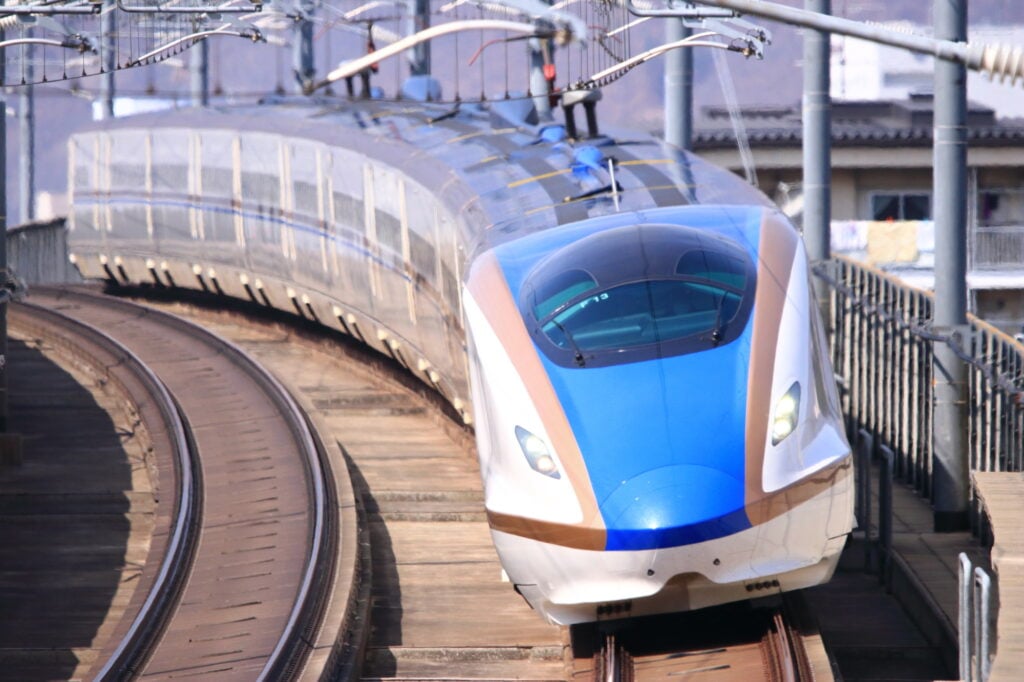
Maximum speed: 260 km/h
Number of seats: 934 (for a 12-car train)
Facilities: Green Car, Normal Car, Grand Class, etc.
Route: Hokuriku Shinkansen
This train runs on the Hokuriku Shinkansen Line and features a sophisticated design and comfortable interior space.
Grand Class and Green Car are also available, allowing passengers to enjoy a higher grade of travel.
The E7 Series is owned by JR East and the W7 Series by JR West, but both are essentially the same train.
You can enjoy a comfortable trip with a beautiful view of the Hokuriku Shinkansen Line.
Difference between Nozomi, Hikari and Kodama
The main differences between Nozomi, Hikari, and Kodama operated on the Tokaido and Sanyo Shinkansen lines are the number of stops, arrival speed, and the ratio of non-reserved and reserved seats.
For more information, please see below.
Nozomi: The fastest train, connecting Tokyo and Shin-Osaka in approximately 2 hours and 22 minutes. In a 16-car train, only cars 1, 2, and 3 have unreserved seats, and the Nozomi fare applies.
Hikari: Connects Tokyo Station and Shin-Osaka Station in about 3 to 3.5 hours. In a 16-car train, cars 1-5 are unreserved seats, and the fare is the same for both Hikari and Kodama.
Kodama: trains stop at every station, connecting Tokyo and Shin-Osaka stations in about 4 hours. 16-car trains have unreserved seats in cars 1-6 and 13-16.
Comparing differences between Nozomi, Hikari and Kodama
| Item | Nozomi | Hikari | Kodama |
| Maximum speed | 285km/h (300km/h on Sanyo Shinkansen section) | 285km/h | 285km/h |
| Number of Stops | 6 stations | 〜14 stations | 17 stations |
| Time from Tokyo to Shin-Osaka | Approx. 2 hours 22 minutes | Approx. 3 to 3.5 hours | Approx. 4 hours |
| Charge | Nozomi Fees *Subject to change depending on the season. | Hikari/Kodama common fare | Hikari/Kodama common fare |
| Unreserved cars | Cars 1-3 | Cars 1-5 | Cars 1-6 & 13-16 |
| Stops (between Tokyo and Shin-Osaka) | Tokyo Station, Shinagawa Station, Shin-Yokohama Station, Nagoya Station, Kyoto Station, Shin-Osaka Station | Tokyo Station, Shinagawa Station, Shin-Yokohama Station, Odawara Station, Atami Station, Mishima Station, Shizuoka Station, Hamamatsu Station, Toyohashi Station, Nagoya Station, Gifu-Hashima Station, Maibara Station, Kyoto Station, Shin-Osaka Station *Some trains stop at Odawara, Atami, Mishima, Shizuoka, Hamamatsu, Toyohashi, Gifu-Hashima, and Maibara (stops differ for each train). | Tokyo Station, Shinagawa Station, Shin-Yokohama Station, Odawara Station, Atami Station, Mishima Station, Shin-Fuji Station, Shizuoka Station, Kakegawa Station, Hamamatsu Station, Toyohashi Station, Mikawa-Anjo Station, Nagoya Station, Gifu-Hashima Station, Maibara Station, Kyoto Station, Shin-Osaka Station |
Which Shinkansen should I get on: the Nozomi, Hikari, or Kodama?
Please refer to the following information on which of the three types of Shinkansen trains you should take: Nozomi, Hikari, or Kodama.
For the fastest reserved-seat travel, choose Nozomi.
The Nozomi, which runs between Tokyo and Shin-Osaka in less than 2 hours and 30 minutes, is the fastest train on the Tokaido and Sanyo Shinkansen lines.
With only a few stops, it is recommended for those who want to travel between the cities of Tokyo, Shinagawa, Yokohama, Nagoya, Kyoto, and Osaka in the fastest possible time.
Hikari provides convenient access to regional cities such as Atami and Shizuoka.
Travel between Tokyo and Atami in about 40 minutes, and between Tokyo and Shizuoka in about 1 hour.
For some intermediate stops that Nozomi doesn't stop at, Hikari may arrive faster than Kodama.
Hikari is also suitable for those who value comfort while traveling, as it is easy to secure reserved seats.
Hikari is the best way to get to places like Atami and Shizuoka quickly.
The Kodama is the slowest Shinkansen between Tokyo and Shin-Osaka.
Recommended for those who want to spend a relaxing time on board the Shinkansen train, as there is ample time for travel.
It also has the largest number of free seats, making it easy to secure a free seat.
If you want to enjoy the Shinkansen train ride at a leisurely pace and use unreserved seats, Kodama is recommended.
All Shinkansen trains are well equipped with amenities!
The Shinkansen trains are equipped with a variety of amenities to ensure a comfortable ride.
For example, many seats are equipped with mobile outlets to charge smartphones and other devices.
The most common pattern is all seats in the green car plus a window seat in the standard seat, but some trains, such as the N700S series, are equipped with power outlets in all seats.
Wi-Fi is also available on most routes, allowing you to connect your smartphone or computer to the Internet.
It helps you work, view videos and social networking sites on the Shinkansen.
Furthermore, Shinkansen trains are equipped with Western-style toilets, so passengers can rest easy on long journeys.
Recently, more and more vehicles are being equipped with toilet seats with hot water washing functions and multipurpose toilets.
In addition, some lines and trains, such as the "Grand Glass" offered by JR East, have created luxurious interiors that resemble first class airplanes.
N700S is equipped with power outlets in all seats
The N700S Series Shinkansen, which has been in service on the Tokaido, Sanyo, and Kyushu Shinkansen lines since July 2020, is equipped with facilities worthy of the name S for Supreme.
It should be noted that all seats, including the standard cars, are equipped with power outlets. All seats have sockets in the armrests for charging smartphones and other devices.
In addition to the reclining function, the seats of the N700S have a high level of cushioning, making them comfortable even in standard cars.
Of course, the green car is also a supreme environment, with large tables and footrests.
The N700S Shinkansen schedule can be found on the JR Tokai website and other sites.
When you travel to Japan, please aim to board the high-grade N700S series.
Q&A about Shinkansen types
Below are answers to some frequently asked questions about the different types of bullet trains.
Q. What are the meanings of numbers such as the 700 and 5 in each series?
It is said to be simply the model number of the vehicle.
The first and Tokaido/Sanyo Shinkansen cars were Series 0, the improved Series 100, the next Series 200, and so on, with the numbers increasing in turn.
In regards to the alphabet used in the model numbers, the "N" of the N700 Series stands for "New."
The "E" in the E5 Series refers to "East" and the "W" in the W7 Series refers to "West."
Q. Do different trains have different amenities?
Yes, Shinkansen facilities may vary by train.
Specifically, note that facilities such as seat width, electrical outlets, Wi-Fi, luggage storage, and restrooms vary from train to train.
Incidentally, the latest model of the Tokaido and Sanyo Shinkansen, the N700S, is equipped with power outlets in every seat.
There are 10 Shinkansen lines, and the N700 series is the standard type of Shinkansen
There are 10 Shinkansen lines, including the Tokaido and Sanyo Shinkansen lines, and the main car types include the N700, E5, and H5 series.
In addition, Nozomi, Hikari, and Kodama differ in terms of travel time, fares, and the number of reserved and unreserved seats.
Next time you ride the Shinkansen, be sure to enjoy these differences as you ride.

